SAN FRANCISCO — Bay Area Rapid Transit and Amtrak are joining forces to study the possibility of a second San Francisco Bay rail crossing, creating the possibility of one-seat Amtrak rides between Sacramento and downtown San Francisco.
The San Francisco Chronicle reports the concept is to run two sets of tracks across the bay, either in a tube (as with the existing BART crossing) or on a bridge). Each operation would have its own set of tracks, since BART uses 5-foot-6 broad gauge.
In November, BART sent a $50 million contract to bid for a feasibility study of a second crossing.
David Kutrosky, managing director of the authority that operates Amtrak’s Capitol Corridor trains, tells the Chronicle that goal is to open up a “brand-new market by offering a one-seat ride from Sacramento to San Francisco.” Even with the current need to transfer to a bus or BART, the Sacramento-San Francisco city pair accounts for about 750,000 trips per year.
The new connection might also be able to accommodate California’s high speed rail project, and could make possible direct rail connections to Caltrain locations between San Francisco and San Jose.





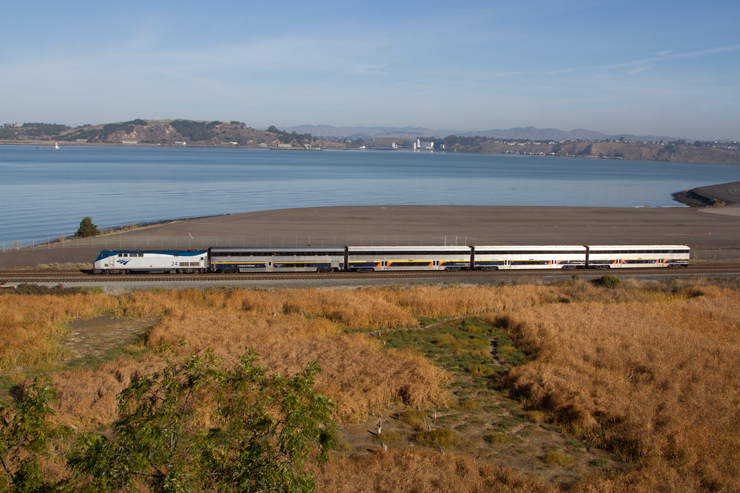

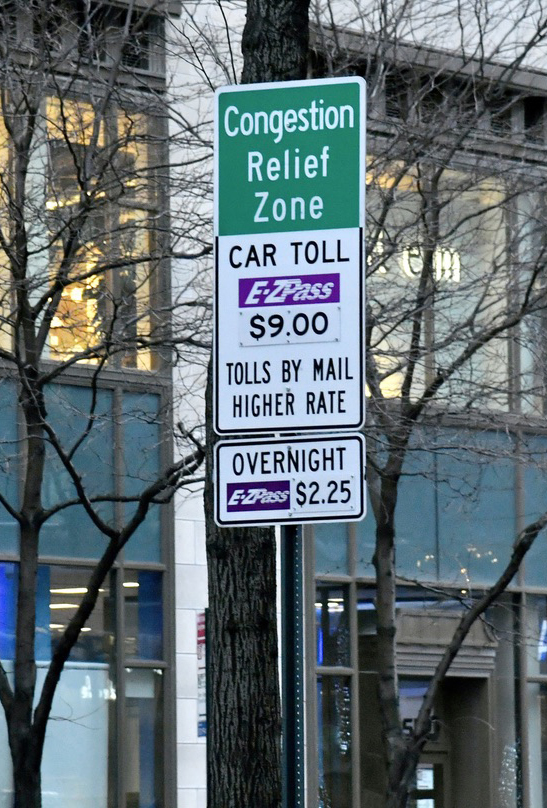
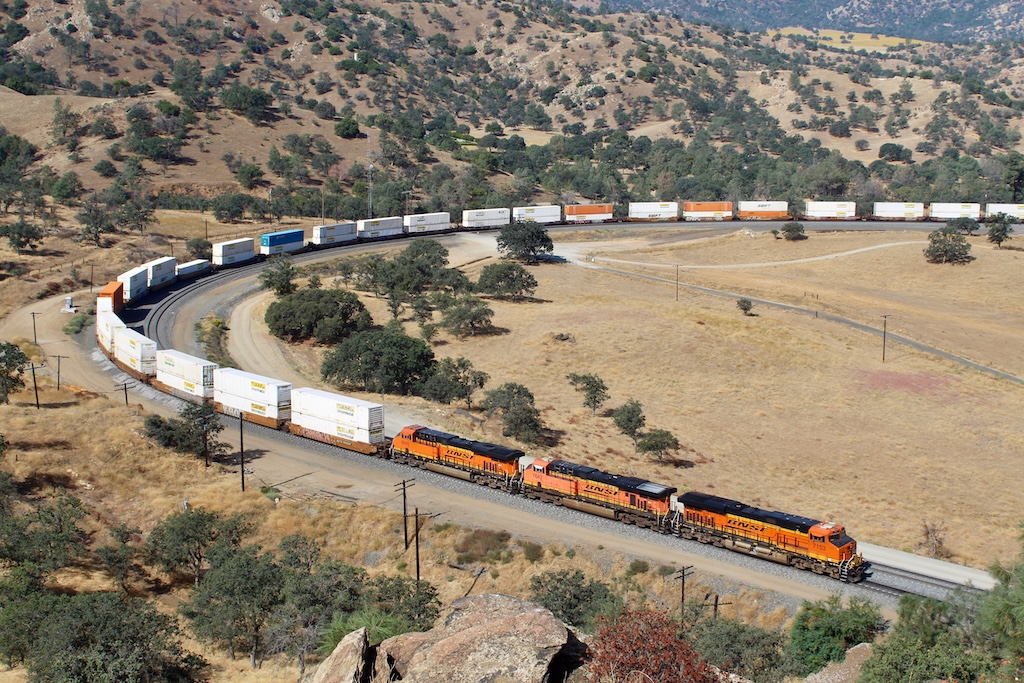
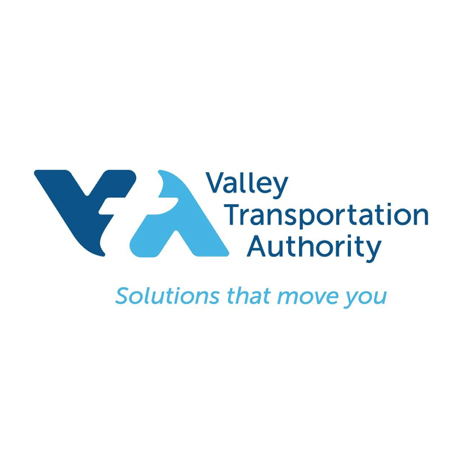
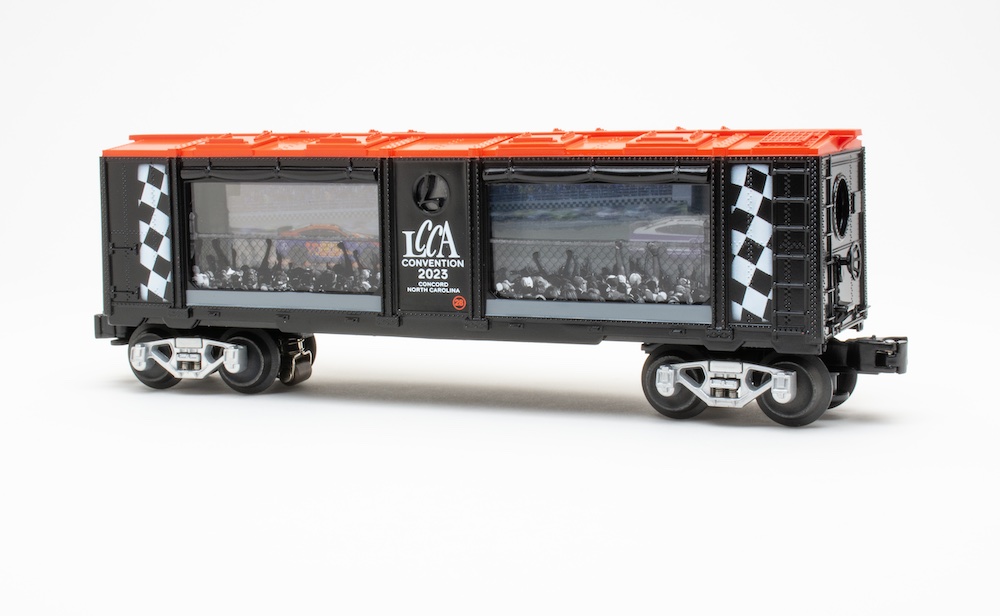




This from a company that can’t get the money to fix tunnels that are in serious danger of failure in New York/New Jersey that were built in 1910? Dream on. It seems we need that money for walls.
I imagine the benefits could include not just a one seat ride from Sacremento to San Francisco, but also service from Sacramento to Silicon Valley and from Silcon Valley to Oakland.
The Richmond Bridge opened in 1956 and received a seismic retrofit in the early 2000’s.
Its about time. Easy for Amtrak and BART to use the same tubes. BART & AMTRAK would share one rail and BART would use outside rail for its gauge and Amtrak the inside rail for its 4ft 8-1/2 inch gauge. Use the heaviest rail possible to extend time till rail replacements. Of course signaling would need some extra engineering.
Now the question of a diesel using a tunnel bore has no place in California. The smoke pollution and soot left on the tunnel bore is not acceptable. Caltrain ‘s 25 Kv CAT could be extended. Maybe addition of electric at Emeryville would be acceptable as it is a servicing stop.. Station in SFO would be in Transbay terminal if the structure problems are ever solved.
The need for a second rail tube under the bay is finally surfacing (pun intended) and getting the attention it deserves. As has been pointed out the current BART tube is at capacity. And the big enhancement in the past couple of years is the recognition that this tube should serve both BART and regional rail. While Amtrak’s use of the proposed tube would be beneficial, the real benefit would be to extend CalTrain service to the eat bay and up to Martinez. East Bay residents would then have a much easier way to reach jobs on the peninsula and vice versa.
There is a real need for this enhanced regional rail — ask anyone who commutes over or under the bay.
There will be challenges getting Caltrain from its current terminal at 4th and King to the new Transbay Transit Center and then east to the bay, but we need to start studying this — no it is not a pork project.
Wow,$50 mill just for a study, Can anyone smell the pork cooking?
Pork project, just like the HSR in California!
I just looked up the planned location. It would be a parallel crossing to provide extra BART capacity and would connect to the new TransBay Transit Center. See: https://en.wikipedia.org/wiki/Transbay_Tube
Mr. Landey, I wonder if it is not so much a new market as a capacity issue for BART. BART now has lines to 4 different East Bay destinations sharing a single TransBay crossing. Any future expansion will be constrained by that bottleneck. BART may be looking to either add redundancy with a parallel tunnel on the same route or to divert an existing line to a different crossing to free up capacity in the existing tunnel. And my bet is that they are just beginning to consider a multitude of options.
This proposal should have been executed over a century ago. San Francisco would have been the true destination of two namesake trains, “The City of San Francisco” and “The San Francisco Chief”.
What was not mentioned in the proposal was extending service of “The California Zephyr” along with Caltrain from Emery and Oakland to the city proper of San Francisco.
More questions than answers. Where is the proposed route that would be a new market for BART, not duplicating the existing Market Street Line? Were are terminals for BART and Amtrak proposed on the SanFran side?
While I do try to avoid California as much as possible, I have travelled from Sacramento on Amtrak and transferred to BART at Richmond. It got the job done because BART goes to lots of places. My destination was actually Concord, not SanFran. The Bay Area is lots of cities and counties and SanFran for all its mojo is only one of those places.
I’m curious how the new proposal would either be an improvement, serve a new market, or relieve congestion. One would need more information to put this on the priority list. I’m not criticizing the proposal, only saying that the short article doesn’t say very much.
TIMOTHY – Thanks for your post. Informative and you make your point. How old is the Richmond – San Rafael Bridge? I was driven over it almost 30 years ago and it didn’t look brand spanking new back then.
Timothy, I admire your passion for trains (your third paragraph), which are a great way to travel for sure. California has made great strides. Everything you are proposing will come at an enormous cost. Then what you will find is that as the new rail infrastructure ages over a period of decades, that just adds to inventory of aging infrastructure (highways, bridges, aqueducts, etc.) that will need to be maintained.
As for railroads eliminating the need for new freeway lanes, Timothy, don’t take that to the bank. A big-time passenger railroad carries miniscule traffic compared to a small-time freeway. Do the math. A relatively relaxed freeway carries 85k vpd. Amtrak carries 85k daily – nationwide. Including those California corridors, all of them.
As Bay Area resident and full time commuter this makes a lot of sense to me just as high speed rail from Central Valley into San Jose does. The cost of just adding more highway lanes will be huge for a lot of the bay area and cali in general.
The reality is a lot of Cali infrastructure is at capacity from roads, to ports, to airports to dams & reservoirs. The more infrastructure that can be built and the more options the better in my opinion. and yes, I’m paying for it from increased gas tax to raised bridge toll. Expanding BART to San Jose makes sense, keeping building HSR into San Jose from central valley makes sense, add another express commuter lane to Dumbarton Bridge, add a private commuter rail line on an existing rail line next to Dumbarton bridge makes sense and yes, a second rail tunnel from East Bay into the Transbay transit center would be huge for the region
A twin tunnel, Catrains option, would essentially give you two rail lines starting from Sac, splitting with one going down each side of the bay and coming back together in San Jose. Maybe look at another track between Richmond and Port of Oakland for the added freight/passenger rail capacity needed. Add in electrification and now you got a 100-110 mph express train option alongside the jam packed I-80 corridor from one of the fastest growing cities in Sacramento with the Bay Area 4 million jobs & the jobs they keep adding
Might have to add a bridge replacement with more lanes to the mix along with a real cause for Hwy 37 since concrete started falling off the San Rafael – Richmond bridge this afternoon
Actually, the study is not for just one new tube under the Bay, but for two parallel tubes…in this case one dedicated to BART and the second for conventional rail service. The reason for having direct rail service between the state Capital and S.F. is not for the existing 750,000 riders they have between those city pairs now, but the other 1 million plus per year that drive along the I80 corridor from other cities along the route.
All – thanks for the comments. I had no idea that the Bay Tube was at capacity. Now I understand the need for the second tube. Also redundancy is always nice in an earthquake zone but redundancy comes at a cost.
I’m not sure why AMTK needs to get to SanFran, not at that price. Use BART as a local distributor from Amtrak trains at East Bay. Maybe special BART trains will bigger seats and room for luggage and some refreshment service could meet AMTK at Richmond (as now) and a new connection at Oakland.
BTW, there will be no AMTK when this project will be built. It will be called Caltrain or something like that.
what about dual gauge?
When BART was designed the idiots in charge required a high speed requirement during heavy winds. So the consultants came up with a broad gauge requirement because standard gauge track and cars wouldn’t permit the ‘required’ speeds. Any fool not a government employee with unlimited taxpayers money available would have seen that was a mistake (for one thing BART could have potentially leased the tunnel at night for freight traffic plus not having to buy non-standard, and more expensive, parts like axles, trucks,…). Now they are going to waste more money (in the billions this time) on this second tunnel.
There are some very smart people in California but unfortunately fools are running the place.